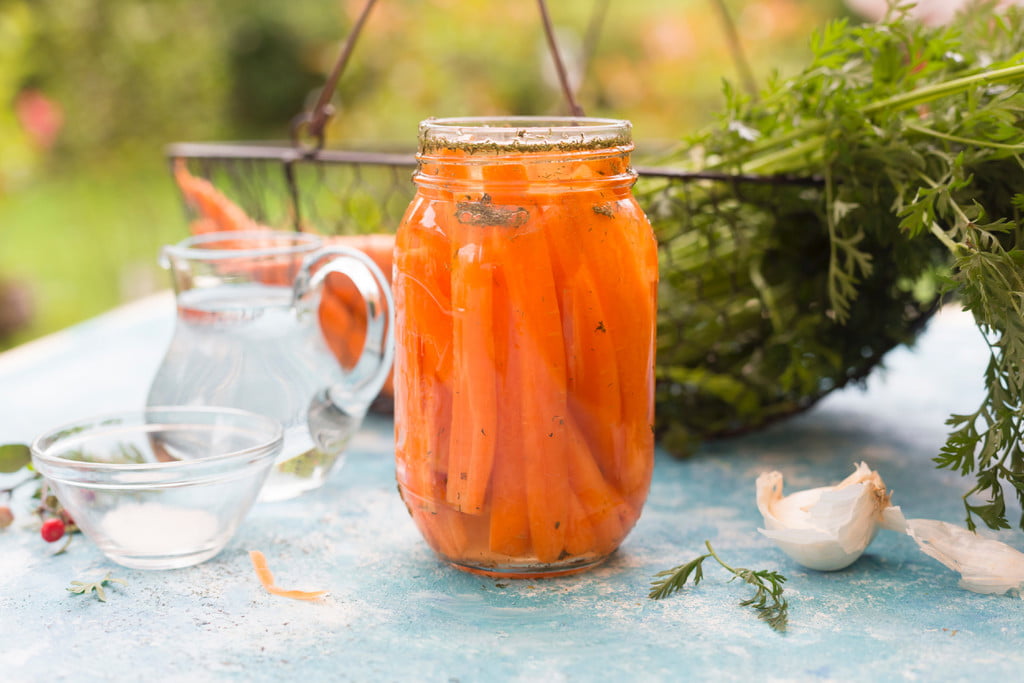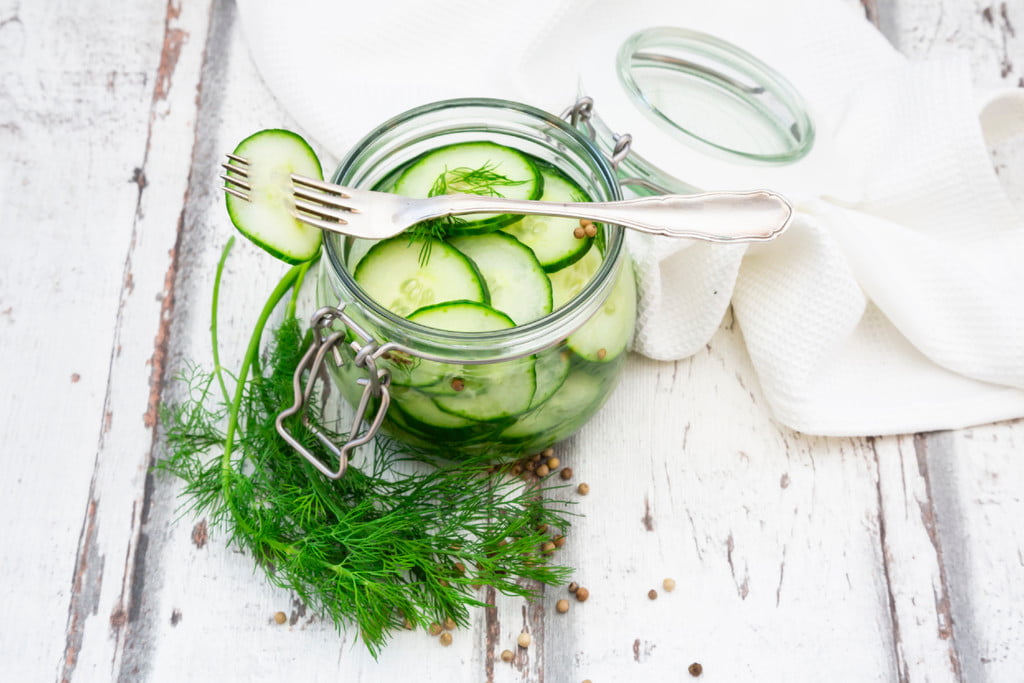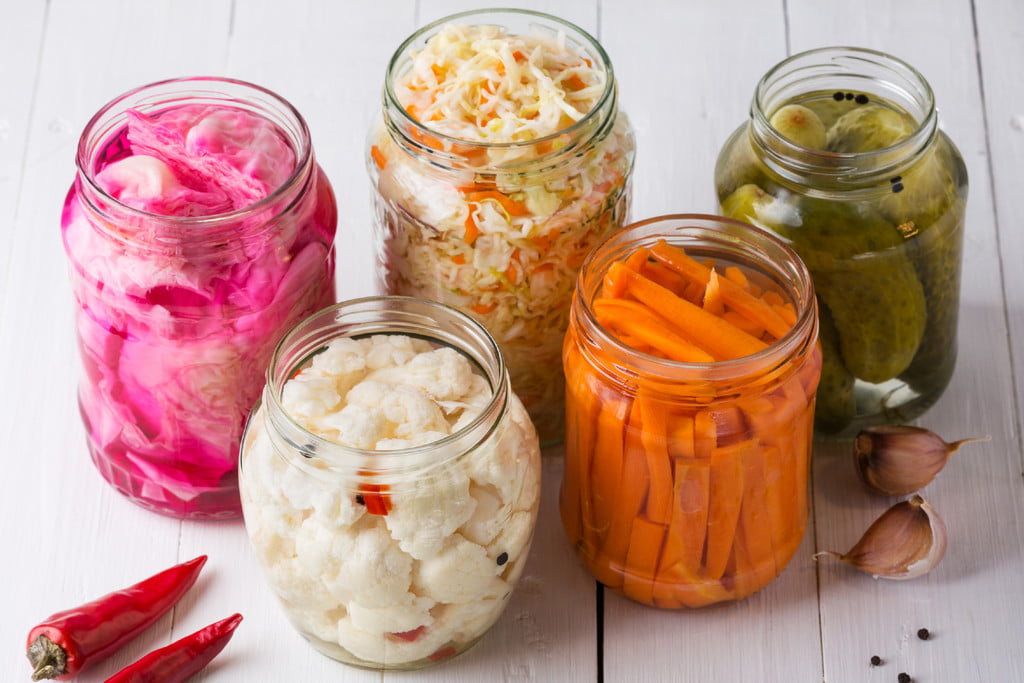Pickling and fermenting are processes as old as time that have recently regained popularity. It seems like there are new pickle recipes and methods for at-home pickles popping up everywhere, and it can be tough to sift through them all. Fermented pickles may sound gross to you, but they are precisely the opposite. If you like kimchi or kombucha, you’ll love fermented pickles. If you’re new to the fermented foods game and want pickles, they are a great way to get into fermented foods. Pickle fermenting at home is easy — the process is simple, and perfecting the recipe is a matter of trial and error for your specific tastes. Learn how to ferment your own pickles at home below.

The difference between pickling and fermenting
Fermenting and pickling are both ancient food preservation techniques that are often confused because the categories overlap each other a bit. That is, some fermented foods are pickles, and some pickled foods are fermented. By definition, a pickle is a food that has been preserved in a brine (salt or salty water) or an acid like lemon juice or vinegar.
Fermented food is preserved and transformed by benign bacteria, which usually means that the natural sugars and carbohydrates in the food have been eaten by the good bacteria present in the food. The bacteria then turn the sugar into acids, carbon dioxide, and alcohol, preserving the food and adding to its flavor. So when you eat something like kimchi, you also consume the good bacteria that has preserved the cabbage.
The overlap
Pickles have been preserved with brines, as we’ve established. Many fermented foods also start with brine, so they are also pickles — fermented pickles. Sauerkraut is an example of a fermented pickle since it’s made by packing cabbage with salt and letting it ferment. Traditionally, dill pickles are fermented cucumbers in salty water. On the other hand, beer and yogurt are fermented, but you would never put them in the same category as a pickle.

How to ferment your own pickles
Now that you know the differences and similarities between fermented foods and pickles, why not learn to ferment your own pickles at home? You can use almost any vegetables you have on hand to ferment pickles, even though most people think of cucumbers when they hear the word “pickle.” In fact, pickling is a fantastic way to preserve all of the vegetables your garden produces. There are two popular methods of fermenting pickles — read more about each below.
Sous vide
To cook sous vide, you need an immersion circulator, which is a tool that sounds way fancier than it really is. It sets the water temperature you immerse it into, and, in turn, any food in the water gets cooked to that same exact internal temperature. So, to pickle something sous vide, you would complete all of your usual canning steps, submerge your jars into the water, and sous vide them until they reach the desired internal temperature (140 degrees Fahrenheit). The cooking process takes about two and a half hours if you are using quart-sized jars. If you are using smaller or larger jars, you will have to adjust the sous vide time accordingly, which may take a bit of experimenting.
Buy Now
Lacto-fermentation
Lacto-fermentation is the process that produces traditional dill pickles and works because harmful bacteria cannot tolerate salt. And pickles are made with lots of salt or brine, as mentioned previously. There is no canning, no submerging, no heating, etc., involved in lacto-fermentation, which means that it is not used for long-term preservation. Most fermented foods are edible for two months or more, and their flavors develop and become more acidic over time. So, to prepare fermented pickles, you proceed as you usually would with the steps for canning until you get to the point where you would start to cook your jars. Once the lids are on, store the jars in a cool and dry place for up to two months.

The choice is yours
Now that you know the difference between pickling with the sous vide (or canning) method and lacto-fermentation, the decision is yours. We think that the sous vide method yields crisper pickles, so texturally, they’re way better, but it depends on what you like and what you are preserving. Don’t worry; you don’t have to choose one method. Try them both out and see which produces the foods you like best.



